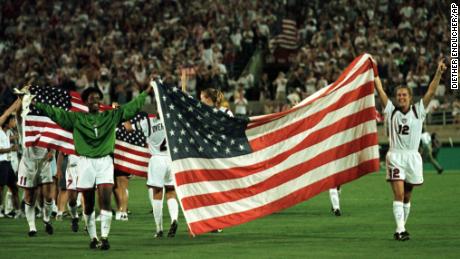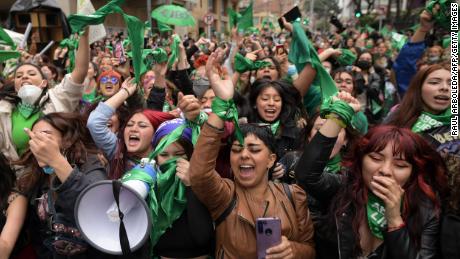Here’s how the story goes: in a lawsuit that listed 28 of the team’s players as plaintiffs, the US Women’s National Team (USWNT) claimed that they were paid less than the men’s team, and that it constituted a form of gender discrimination .. A judge ruled against them in May 2020, and the following year, USWNT filed an appeal.
This news is not just of consequence to fans and players of women’s soccer in the US. Disparities between what men’s and women’s teams are paid exist all over the world, with the size of that pay gap dependent on the sport and what conscious action has been taken to equalize pay.
So, what lessons — if any — can advocates and supporters of pay parity in other sports learn from the USWNT win?
The first thing is that leadership matters. “I would say the most immediate cause of [the victory] was Cindy Parlow Cone taking over as the new US Soccer president,” says Steph Yang, women’s soccer staff writer at the Athletic, who has been following the topic of equal pay in soccer since 2012.
The third lesson is that investment determines outcomes. Yang, Chaudhry, and countless others have made the case that human beings have no natural preference for men’s sports over women’s. What you put in is what you get out and USWNT put a lot in at the beginning, resulting in them standing head and shoulders above the competition, which in turn created buzz and public support.
If you make a modest investment upfront, “you’re going to outperform 95 percent of the rest of the field,” says Yang. She contrasts the investment made in women’s soccer in the 1990s to the lack of investment in women’s college basketball in the US today.
“People don’t have natural inborn appetites for certain kinds of sports or gendered activities,” says Yang. “It’s completely determined by our cultures; the way we’re socialized. We assign the value to sports.”
Contingent on the ratification of a new collective bargaining agreement (CBA), USWNT players will be paid at the same rates as the men. But gender parity in sports isn’t just about money in the bank — there are also differences in treatment and coverage to contend with, Yang explains and gives the example of parental leave.
“Parental leave is something that the women’s team would obviously negotiate for. But the men’s team, they’re like: ‘Well, my partner stays at home and takes care of the child. That’s not something that is ever expected of me so why would I ever want to negotiate for parental leave when there’s other stuff that I want to go for?'”
The ability to provide childcare without damaging your career is just one example of an area where the CBAs between men and women players might differ, Yang explains, though she hopes for a day when CBAs reflect a societal view that parental leave is a shared irrespective of gender. For now though, Yang says: “For women [soccer players] it has to be a cornerstone of any labor negotiation if they want to be able to have a career that lasts longer than three years.”
Still, Tuesday’s news is cause for celebration and hope. “The victory gives me a lot of hope because it shows what women are capable of; how persistence pays off,” says Chaudhry. “And I really hope it inspires women across our country and hopefully internationally to fight for what they think they deserve and what they’re entitled to.”
Story of the week
The success of University of Pennsylvania swimmer Lia Thomas, a transgender woman who previously competed for the men’s team, has raised questions about trans women’s participation in sports and the balance of inclusion and fair play.
Other stories worth your time
- Women entrepreneurs join Africa’s fintech revolution — Thomson Reuters Foundation
- Living with Endometriosis — WePresent
- Shivanah’s story — AfroQueer podcast










More Stories
India’s T20 World Cup jersey unveiled! Rohit Sharma featured in launch video
Tomorrow’s IPL Match: Who’ll win Delhi vs Rajasthan clash?
Noor Ahmed clinches Virat Kohli’s wicket, gets special gift from RCB star